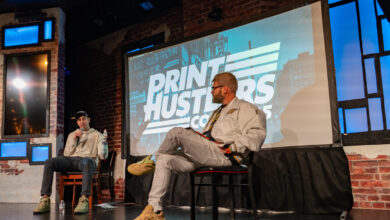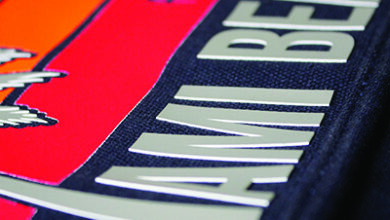T’is the season of milestone events and sentimental national holidays. From Mother’s and Father’s Day to graduations and weddings, loved ones are on the hunt for a perfect present. Shopping the registry or gifting cash may be appreciated, but is it memorable?
Entrepreneurs across the graphics and promotional products industries are leaning into their creativity to offer personalized alternatives to traditional favorites. Below, industry professionals break down the current state of business, discuss best-selling products and provide important business-building tips to maximize the upcoming selling season.
State of business
According to Grand View Research, the global print-on-demand (POD) market size is valued at approximately $6.18 billion and projected to climb at a compound annual growth rate (CAGR) of 25.8% between 2023-2030. Shifting consumer preferences, such as gifting custom-made products for special occasions, are influencing demand in categories like personalized apparel, home decor, accessories, and drinkware.
Travis Ross — owner of Make Your Mark Designs, a full-service POD company located in Denver, Colorado, and co-host of the Print On Demand Cast podcast — points to a variety of factors impacting the personalization segment, including greater product selection and significant advancements in print technology. New purchasing patterns continue to shape the industry at large as well, from widespread internet penetration and smartphone adoption to younger demographics.
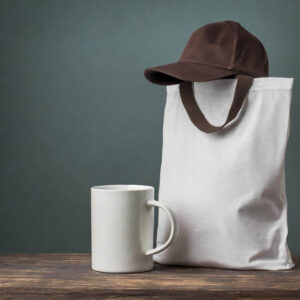
“Customers want what they want, when they want it,” he said. “The industry is innovating at a rapid rate to keep up with consumer demand and expectations.”
Consequently, industry professionals agree it is increasingly important for shop owners to step up their investments in modern equipment and digital tools. Ross points to upgraded printing technologies like direct-to-film (DTF) and direct-to-garment (DTG) as game changers in the quality and cost-effectiveness of POD services.
As popular marketplaces like Etsy and Amazon continue to swell in size, scope, and reach, more shop owners are leveraging advanced online capabilities like e-commerce and webstores to market and sell unique product offerings to those who crave customization.
“E-commerce is a must for modern shops. Having a way to both sell your shop’s products and services online, plus a way for your customers to sell online, will help you stay competitive,” said Mike Clark, content marketing manager at Inktavo — parent company of InkSoft, Printavo, GraphicsFlow, and SignTracker.
In addition, many entrepreneurs within the graphics and promotional products industry are integrating specialty design tools, third-party apps, and APIs to create seamless order processing, better user experiences, and improved workflow efficiency for both sellers and platforms.
Companies like Inktavo, SAGE, Chipply, shopVOX, Webstores Simple, and Shop-Works are at the forefront of comprehensive software solutions, featuring a finely-tuned suite of products specially designed to handle industrywide daily operations, from e-commerce and webstores to back-end business management and data analytics.
“With these tools, print shops can cut down on errors and mitigate quality issues because they’ll have support in areas where breakdowns usually occur,” Clark added.
Shop owners lean on these industry insights, so they can capitalize on current trends in personalization.
What’s hot?
Legacy categories like apparel, hats, mugs, and totes are still appealing to consumers, plus serve as low-hanging fruit for decorators. However, industry professionals agree consumer preferences are evolving.
Today, patrons want to personalize pet memorabilia, custom brand items for special occasions, laser engrave Stanley tumblers, and even monogram household goods like shower curtains or duvet covers.
In doing so, Ross says everyday commodities become keepsakes that can last a lifetime.
“Memorable gifts have staying power,” he said. “Grandma loves to cook, so we’re going to look into wooden recipe binders, cookbook stands, and charcuterie boards — all of which can be personalized. Now, the household item is not only a gift, but also something that can be passed down within the family. That type of [merchandise] has a lot of potential.”
The personalized gifts segment in the U.S. is expected to increase 8.65% between 2022-2027. According to Technavio, items like jewelry, phone cases, keychains, and stationery, which can be custom-tailored via text, monogram, or other non-photo means, continue to drive significant market share growth.
From personalized picture frames and photobooks to embossed book stamps and monogrammed baggage, the sky is the limit.
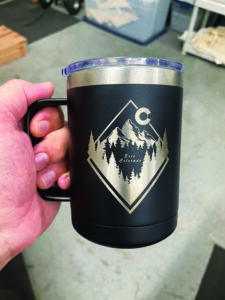
Specifically, Ross points to jewelry as a popular gift in recent years. Not only can it be engraved, but the message card presents opportunity as well.
“It’s like a custom Hallmark card,” he said, noting how the trend flooded the market around the holidays. “In the end, you’re not just selling a piece of jewelry — you’re selling sentiment, an emotion.”
“These gifts have been successful because they create a memory attached to the product. Anything that can rouse nostalgia is going to do well,” he explained.
Ross encourages businesses to study prominent online marketplaces to spur ingenuity. Instead of jewelry, for example, he recalls a company pairing custom cards with teddy bears available in three different sizes.
“All of a sudden, a very common item isn’t so common anymore because the business put a unique spin to create a personalized gift,” Ross said.
While trends ebb and flow, decorators can lean on the past to inspire the present and inform the future. In general, Ross believes the more customizable a product is, the greater the competitive advantage and sales potential.
Details matter
Ross and Clark admit the market is increasingly saturated with DIYers, many of which turn to POD as a “side hustle” for additional income. While this certainly expands consumer choice, it also fuels greater competition in pricing, turnaround time, and ultimately, profitability.
Industry professionals expect solo, home-based entrepreneurs — as well as current U.S. economic conditions and an election year — to affect sales to some degree but believe the future is bright for shop owners who lean into quality and experience.
“The barrier of entry into our market is getting lower and lower, which is both an opportunity and a threat,” he said. “Many of these entrepreneurs [don’t have the resources and] can only execute the basics, giving more experienced shops the chance to highlight their specialty skills and provide a finer product.”

“That has to be a vital piece of the marketing efforts if you’re going after this [evolving] demographic,” he continued.
Plenty of opportunities exist for independent shops to make their mark in personalization — even in a crowded market. While e-commerce is a critical channel, Ross encourages brick-and-mortar owners to tap into established relationships to explore budding revenue streams. From local schools and athletic clubs to hospitals and churches, he emphasizes the community at large is ripe with potential.
“You’re already doing day-to-day business with many of these groups,” he said. “The people behind these businesses are the same ones going on Etsy to personalize T-shirts for their family vacation to Walt Disney World.”
“You have the capabilities [and captured audience] — you just have to market that it’s available,” he continued.
Most independent shop owners also have the advantage of a proper showroom, waiting area or conference room to showcase standout work and prototypes — allowing customers to physically engage with the products and appreciate their tangible qualities before making a purchase. Ross reminds shop owners to reevaluate their space every quarter and tweak as necessary to keep visuals fresh and appealing.
“Your showroom should represent how fast the market is evolving,” he said. “You don’t want to look stale.”
When designing a showroom, consider new and emerging trends, proprietary techniques, and seasonal favorites that showcase the business’ range of capabilities. Old designs are assets lost on the cutting room floor — until they are repurposed as samples.
“If you want to get noticed, do something no one else is doing,” said Wren George, sole proprietor of WrenSong Creations in Fort Atkinson, Wisconsin.
Explore niche markets, test different materials, and experiment with finishes that push boundaries.
“Focus on being exceptional, not an assembly line,” George said, emphasizing the importance of empowering clients.
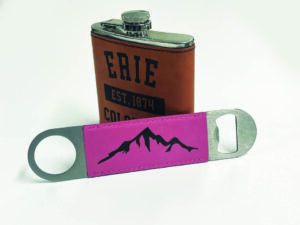 A consultative approach ensures the customer is heard and appropriate options are explored.
A consultative approach ensures the customer is heard and appropriate options are explored.
George abides by a few golden rules when conducting business: provide a welcoming environment, let the customer lead, upsell quality and expertise, set clear expectations (product type, budget, timeframe, etc.), curate compelling samples, and give customers the courtesy to sleep on it.
To mitigate potential errors during the collaboration, industry professionals recommend developing iron-clad policies and processes. Automation and virtual assistants help keep production efficient, while having a customer sign off on a proof adds another layer of protection. Company-wide communication from start to finish is a must.
In the end, George said shops owners who are present, proactive, and personally involved make a lasting impression.
“Word-of-mouth advertising is the best kind of advertising,” George said. “Maybe it wasn’t the biggest sale, but a happy customer will share their experience with everyone — and that feedback can lead to bigger jobs or repeat business.”
“Who knows, maybe the next guy they had coffee with is the customer to bust your business wide open,” she said.


